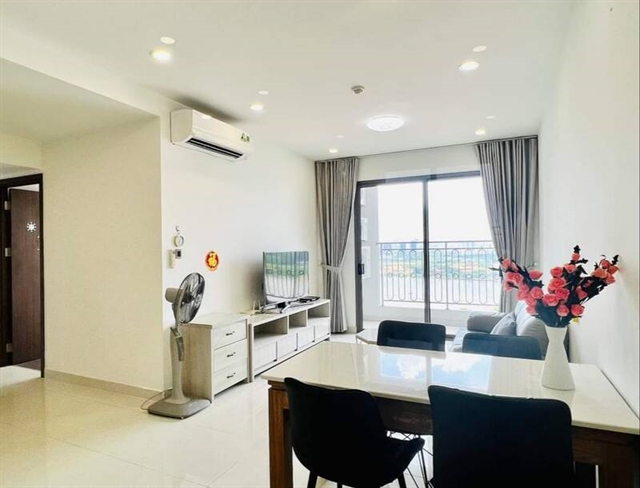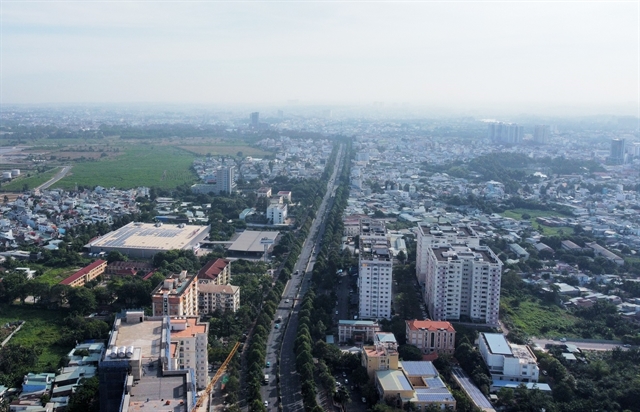One catalyst behind this trend is unverified information about potential administrative changes — notably plans to merge districts or upgrade rural areas into provincial centres.

Compiled by Ly Ly Cao
HÀ NỘI — As the real estate market enters the second quarter of 2025, a noticeable divergence is emerging between different housing segments.
While apartment prices in key urban centres are stabilising after years of sharp increases, land plots and individual houses in many provincial areas are heating up again and not necessarily for healthy reasons.
According to a first quarter report by the Ministry of Construction, apartment and house transactions across the country totalled 33,585, up 132 per cent from the previous quarter.
Land transactions also climbed, reaching 101,049, a 16.4 per cent increase quarter-on-quarter.
Despite this apparent growth, market dynamics remain uneven.
In major cities such as Hà Nội, HCM City, Đà Nẵng and Cần Thơ, the market for condominiums and apartments has cooled noticeably.
Price levels in Q1 were largely flat compared to Q4 2024, indicating a period of consolidation after years of escalation.
Many experts consider this a natural correction phase.
In Hà Nội, for instance, primary apartment prices surged by over 72 per cent between Q2 2019 and Q4 2024, while Đà Nẵng saw a near 50 per cent increase and HCM City prices climbed over 34.3 per cent in the same period, according to a study conducted by the Vietnam Association of Realtors (VARS).
However, recent data suggests that this momentum is now slowing, possibly due to tighter credit conditions, stricter investor sentiment and a gradual shift toward more realistic pricing.
Additionally, the government’s broader housing strategy is moving forward, albeit with challenges. The national plan to build one million social housing units by 2030 remains a key priority.
As of Q1 2025, 103 social housing projects have been completed with 66,755 units delivered, while 140 projects are under construction and an additional 414 projects have received investment approval.
But while apartment prices in urban centres remain relatively stable, land prices in various suburban and rural provinces are exhibiting alarming spikes.
The report by the Ministry of Construction points to renewed waves of speculation as the driving force, especially in provinces such as Bắc Giang, Phú Thọ, Ninh Bình, Thái Bình, Hưng Yên, Hải Phòng and Đồng Nai.
One catalyst behind this trend is unverified information about potential administrative changes - notably plans to merge districts or upgrade rural areas into provincial centres.
“The news of upcoming mergers and administrative restructuring has become fertile ground for land price speculation,” the Ministry of Construction warned.
Take Bắc Giang and Phú Thọ Provinces, for example. In just a few months, land prices in some districts have surged by 20 – 30 per cent, largely based on rumours that certain localities may become part of larger urban zones.
Similar patterns are unfolding in Thái Bình and Ninh Bình Provinces, where brokers are marketing land based on speculative future gains rather than actual infrastructure development or demographic demand.
Experts say such behaviour reflects a speculative mindset that is far removed from long-term, sustainable investment.
This creates risks not only for individual investors but also for the broader housing market, as land bubbles can distort development priorities and misallocate capital.

In Đồng Nai Province, the land price situation is particularly sensitive due to its proximity to HCM City and ongoing infrastructure projects such as Long Thành International Airport.
While some of the price growth in this area may be justified by genuine improvements, the Ministry of Construction cautioned against speculative fever, warning that "price hikes not based on real demand or planning will lead to volatility and higher risks for buyers."
Authorities have urged local governments to closely monitor transaction data and tighten land use and planning regulations.
Provinces are being encouraged to provide accurate, transparent updates to residents to combat misinformation and dampen the effects of rumour-driven speculation.
Financing challenges
The report also points out that only 38 out of 63 provinces had submitted project lists for a significant housing credit programme, which aims to provide VNĐ120 trillion (about US$5.2 billion) in loans for social housing.
So far, the disbursement for this programme has reached only VNĐ3.4 trillion, highlighting the gap between intention and execution.
The government is working to stimulate lending for housing projects, especially those catering to low-income groups.
The State Bank of Vietnam has set a target for credit growth in the real estate sector at around 16 per cent for 2025, which is crucial for supporting ongoing housing initiatives. — BIZHUB/VNS





